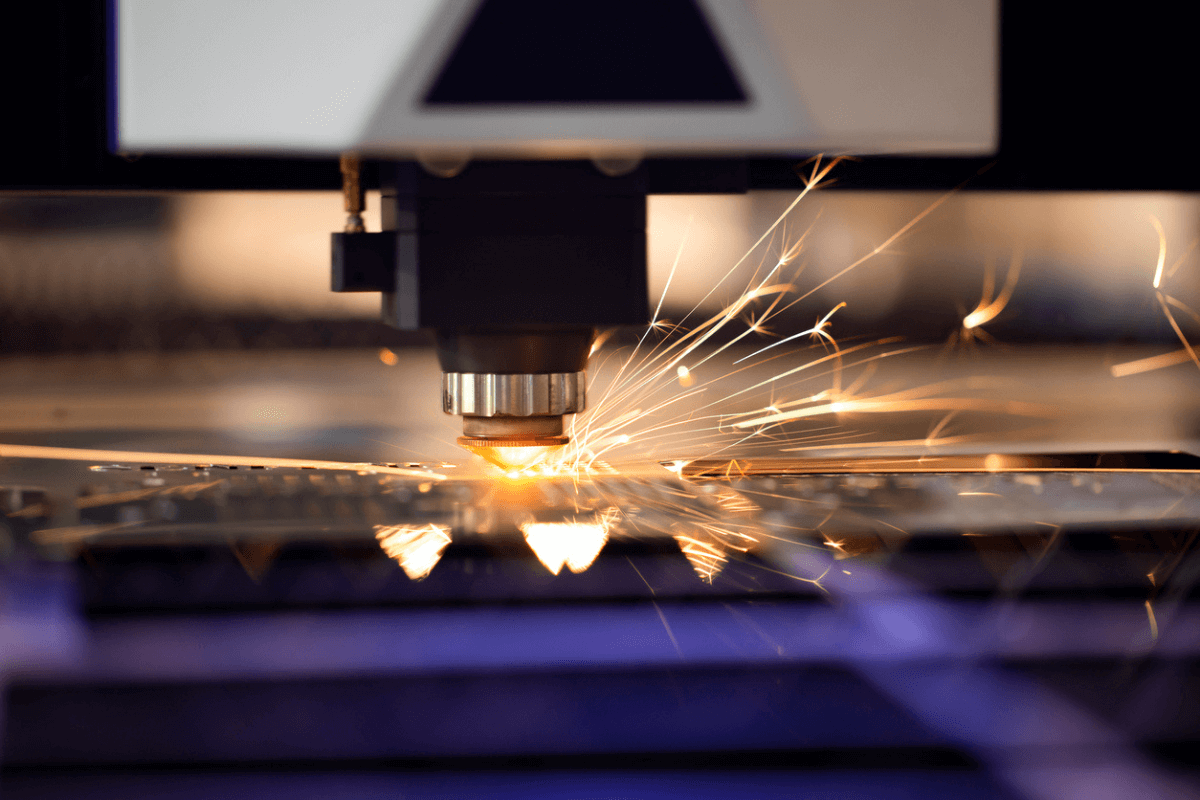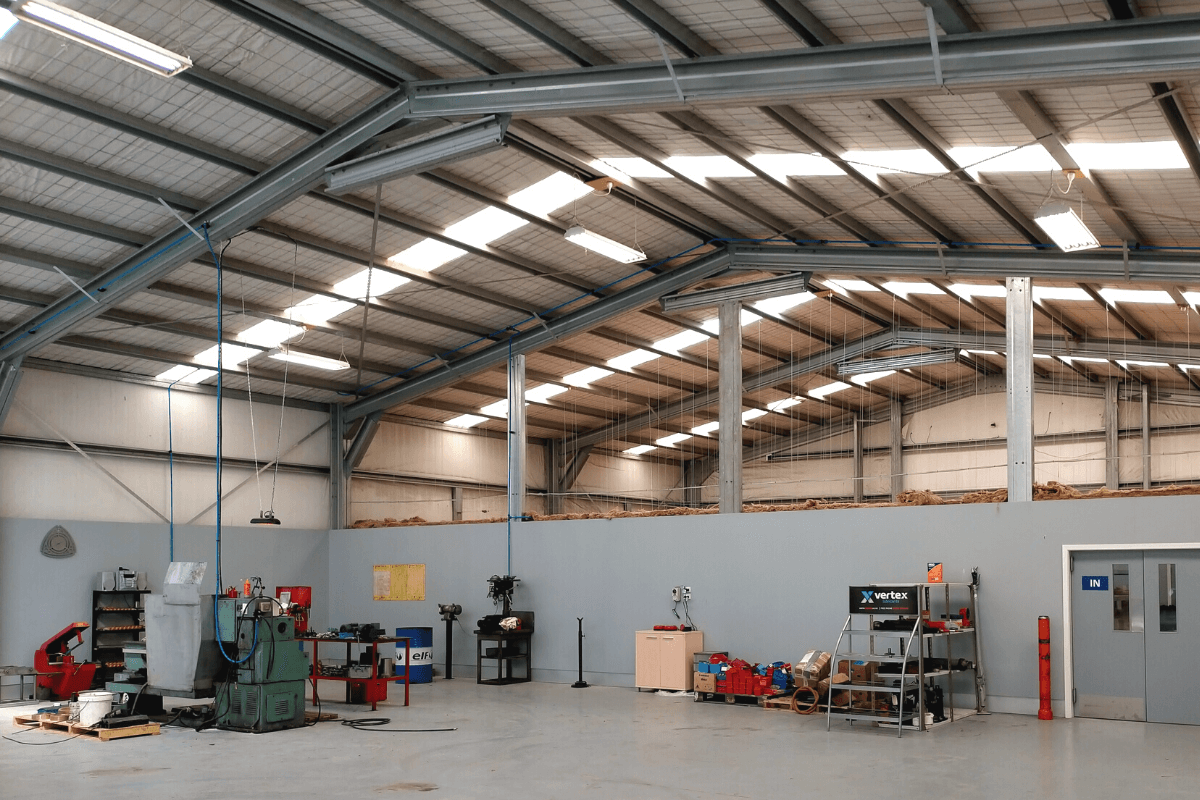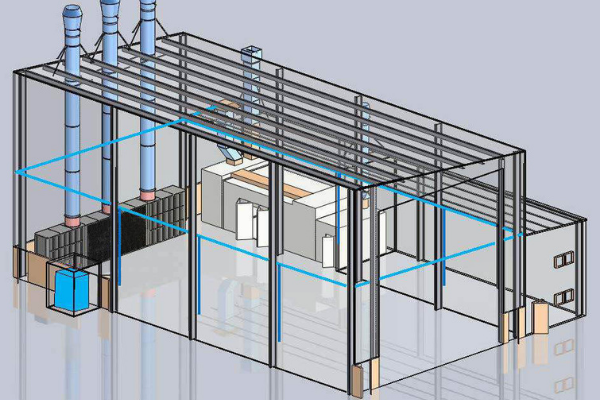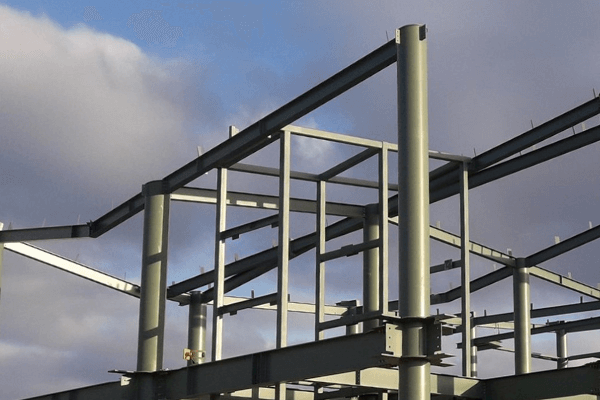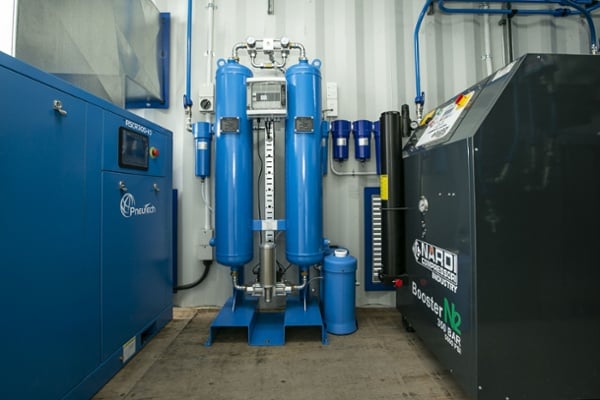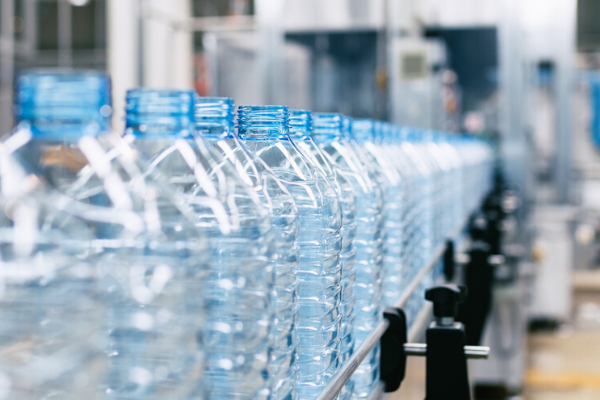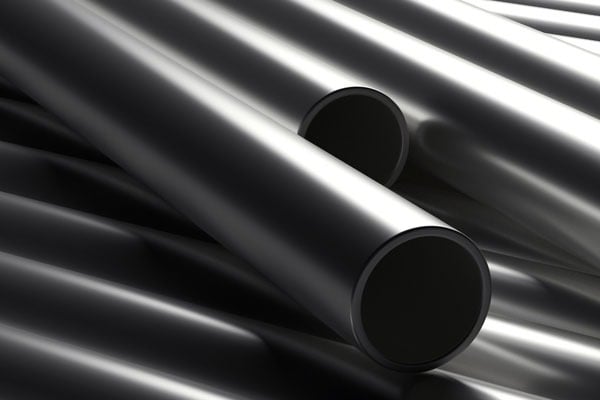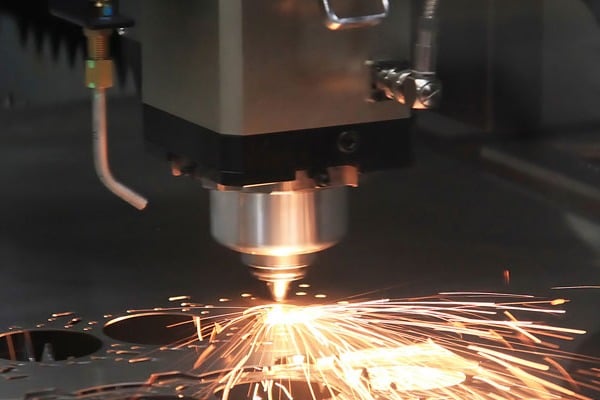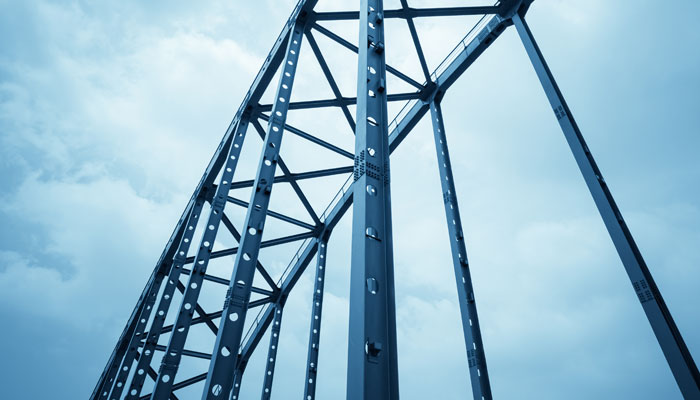If you are struggling to maintain efficiency and meet fluctuating air demand in your compressed air system, an air receiver can streamline your system by providing the necessary storage to balance supply and demand effectively.
The cost of an air receiver depends on its size, material, and customisation. This article explains the costs associated with different air receiver sizes, so that you may choose the right air receiver for your system.
What is an air receiver?
An air receiver, also known as an air compressor tank, is part of a compressed air system. Its primary function is to store compressed air, balancing the supply and demand within the system.
This storage of compressed air acts as a buffer that maintains system pressure to ensure a consistent supply of air during peak demand periods. An air receiver improves the overall efficiency of the compressed air system by reducing the frequency of cycling, which can lower energy consumption and maintenance costs.
For industries that find CO2 expensive and difficult to obtain, an air receiver can be used with nitrogen generators, providing a cost-effective alternative and allowing businesses to manage their air supply costs more efficiently on-site.
Certain applications require 100% pure air, free from oil and other contaminants. Oil-free air compressors deliver high levels of purity and are renowned for their performance and long-term reliability. An air receiver in conjunction with these compressors ensures a steady supply of pure air, essential for industries with stringent air quality requirements.
For more information about air receivers, check out this blog.
The benefits of air receiver tanks
Air receivers offer several advantages:
- Stabilises pressure. By storing compressed air, receivers help maintain a steady pressure to improve the performance of pneumatic tools and machinery.
- Improves efficiency. They reduce the load on air compressors and operate more efficiently and with less wear and tear.
- Enhances system reliability. A properly sized air receiver ensures a reliable supply of compressed air, even during high-demand periods.
How to size an air receiver tank
Properly sizing an air receiver tank is essential to making sure it meets the specific needs of your compressed air system. Key factors include the air compressor's capacity, peak usage, consistency of airflow, end-use pressure requirements, and the diameter of the piping.
As a general guideline, your air receiver should have the capacity to store 10 to 15 litres of compressed air for each CFM (cubic feet per minute) of air output by the compressor.
For a detailed guide on sizing, here’s how to size an air receiver tank.
How much does a standard air receiver cost?
The cost of a standard air receiver varies based on factors including size, material, and customisation requirements. Here’s a general breakdown of costs by size for the New Zealand market.
|
Air receiver type |
Description |
Price range (NZD) |
|
Paint Finish Air Receivers |
270 Ltr - 20,000 Ltr. Certified to all New Zealand regulations. Up to 1,500 litres, 11, 160, or 40 bar pressure, available ex-stock in New Zealand. |
$1,000 - $30,000+ |
|
Galvanised Finish Air Receivers |
270 Ltr - 20,000 Ltr. For long-lasting weather-proof storage. Galvanised air receivers are available to order, with a 2-3 month lead time. 11, 16, or 40 bar pressure. |
$2,000 - $35,000+ |
|
Stainless Steel Air Receivers |
270 Ltr - 20,000 Ltr. Suitable for sterile locations, stainless steel air receivers are available to order in 11, 16 or 40 bar pressure. 2-3 month lead time. |
$3,000 - $50,000+ |
Custom air receiver sizing and pricing
Custom-sized air receiver tanks are needed for specific applications. For example, Fonterra, a leading dairy processing company, required custom tanks suited to their needs. Industrial Air Systems has successfully collaborated with Fonterra to provide custom compressed air receivers that meet their stringent specifications.
Custom air receivers can vary significantly in size, material, and finish, with prices starting from NZD 20,000 and potentially exceeding NZD 50,000 depending on complexity.
Custom coatings and finishes, such as epoxy or specialised linings, add to the cost but provide additional benefits like corrosion resistance and durability. The timeframe for building custom air receivers can also vary, typically extending several weeks to accommodate the specific requirements.
Summing up the costs
The cost of an air receiver is largely dependent on its size and any customisation required. Properly sizing your air receiver tank ensures it meets the specific needs of your compressed air system, enhancing efficiency, reliability, and cost-effectiveness. Whether you require a small air receiver tank for a workshop or a large custom-built compressed air receiver for an industrial plant, Industrial Air Systems offers a wide range of standard and custom options designed to meet the diverse needs of businesses across New Zealand.
Our range includes options that can help you manage your air supply costs, improve energy efficiency, and ensure the purity of your air supply. Alternatively, download our free brochure which outlines our entire range of air receivers.



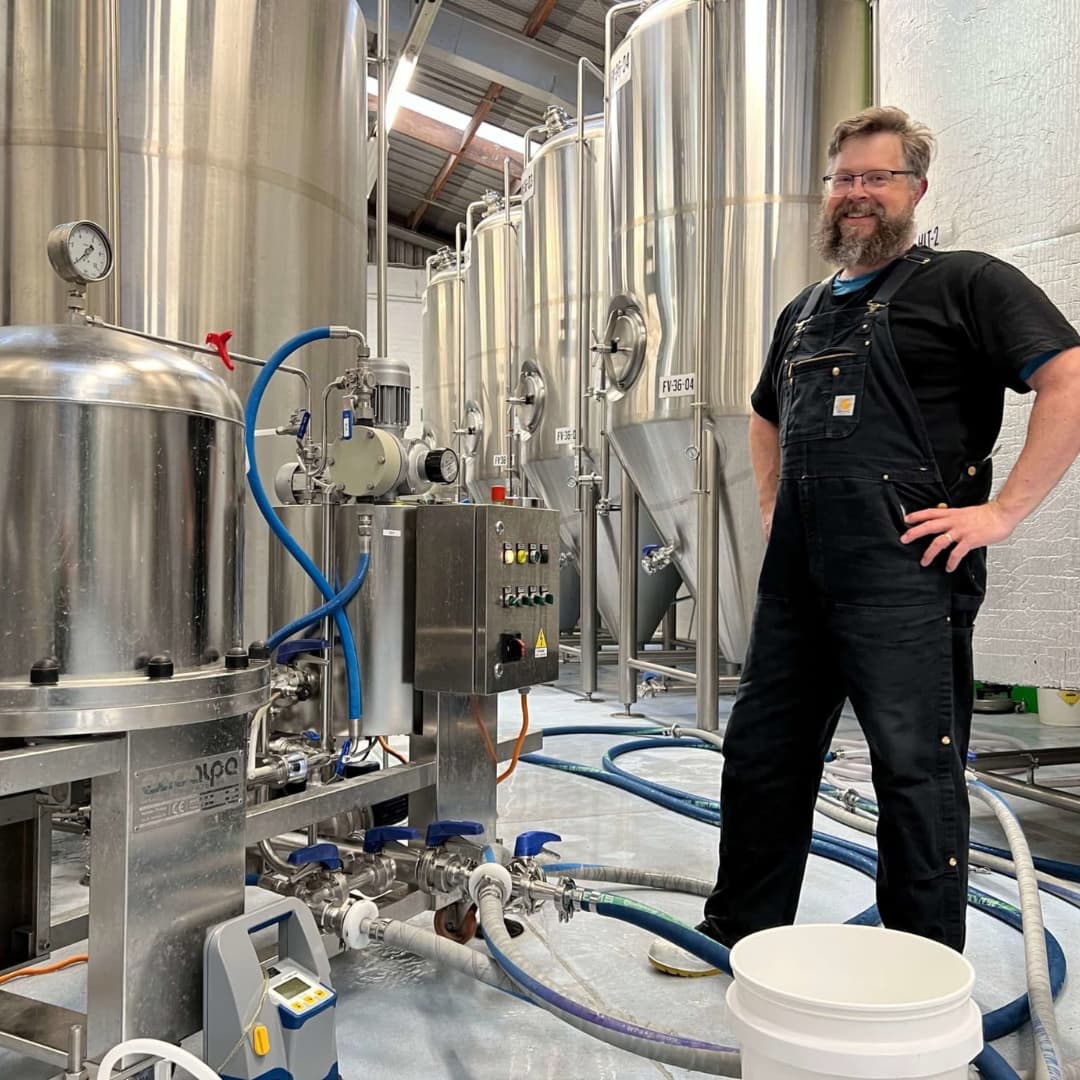
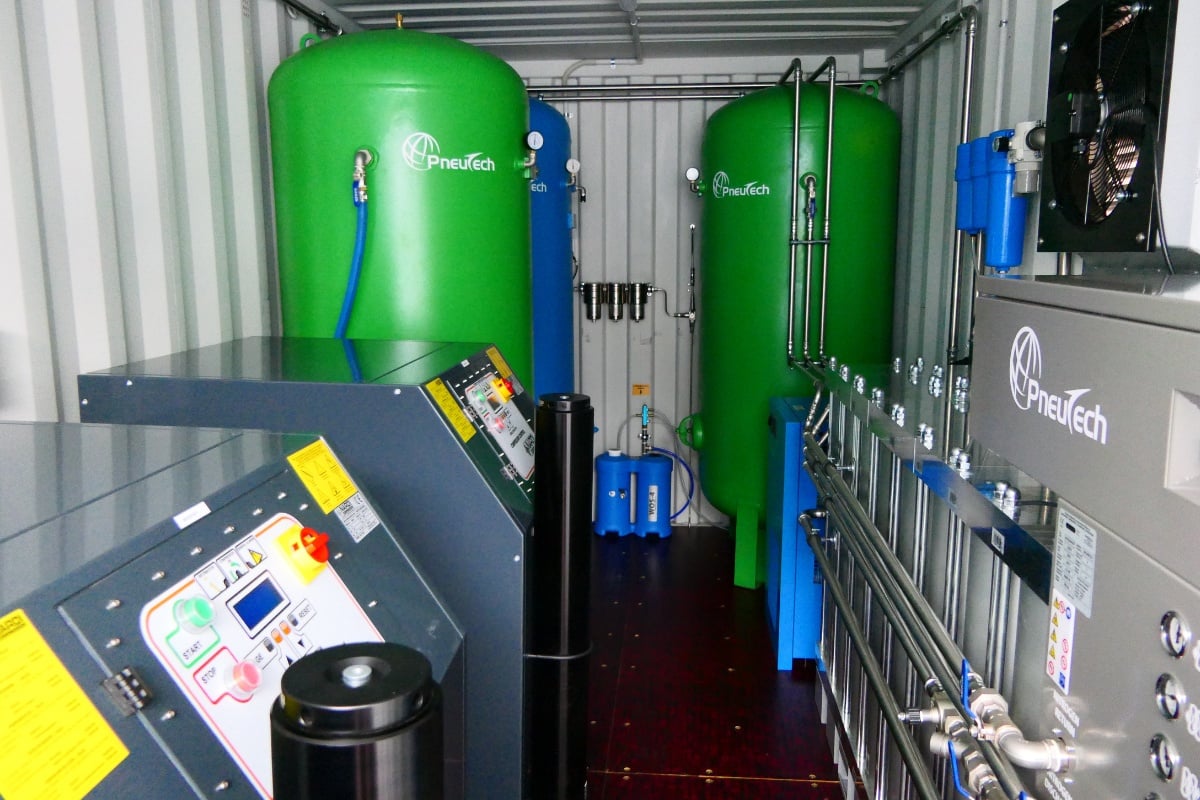
.jpg)


